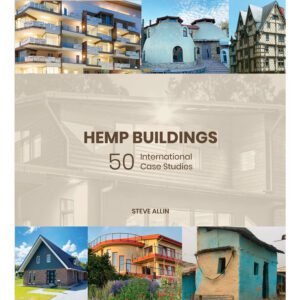Global Hemp Summit

Melbourne University – September 27th 2023
Presentation by Tim Schmidt
Developments
There have been some vital developments within the Australian hemp fibre industry over the last 2 years; the rate of change throughout our industry is gaining momentum and we need to be prepared. We are on the cusp of monumental expansion that may propel the Australian hemp industry well into the lead of global innovation and market development.
Before I continue, there are a couple of definitions that I would like to make clear, which relates to the nomenclature we use to broaden the understanding of the hemp industry.
Definitions
Firstly, as many would know, we define hemp in Australia as cannabis with less than 1% thc, any cannabis with greater than 1% thc we refer to as marijuana. Using this term, rather than high thc cannabis, creates an instant understanding of the distinction, which helps grow the separation between the two products in the minds of the consumers.
In the case of fibre and biomass, biomass refers to the entirety of the plant, including the roots. When we refer to hemp fibre, which is removed from the paddock, we make the distinction between bast fibre and hurd fibre. The bast been the long outer fibres of the plant stem and the hurd the short chalky fibres on the inside.
About the AHC
Now I would like to explain a little about the AHC and how we are working on industry developments.
The AHC was formed in June 2020, it is a 7 member organisation where each member represents a state association and the Northern Territory.
The AHC is a primarily grower and processor driven-and-funded organisation, focusing on addressing issues impacting the industry whilst engaging with Government and community. The members of the council are working to drive policies that will foster productivity of the Australian Hemp Industry with a specific focus on improving the industry’s capacity to compete at a global level, thus ensuring long term sustainability of a profitable industry
We now have over 400 members supporting us across the Nation.
We are pleased to say we have brought structure and recognition to the industry, having facilitated the establishment and collation of grower/processor associations in all states and the Northern Territory.
We meet every month to discuss issues and policy which generates the information for our monthly report published at the end of each month. If you are interested in Australian hemp industry developments, then you should subscribe to our report through our website. Also, we are interested in contributions from those in the industry that we can include in our monthly report.
AHC Key Objectives
Following are our six key objectives:
1 Communication, industry integrity standards and marketing
2 Crop chemical permit applications
3 Guidance to national research
4 Documentation of industry trends
5 Lobbying of state and federal governments
6 Setting of seed certification rules
AHC achievements
Some of our achievements include:
• Establishment of industry specific groups
• Setting industry seed certification rules
• Assist in developing a national R & D strategic plan
• Advising on APVMA chemical permits
• Facilitating the development of the Best Management Practices Guide
• Informing the industry of developments through our monthly report.
• Building a well-respected network of stakeholders dedicated to industry improvement
• Embarking on establishment of industry standards for hemp products.
AHC Strategy
The AHC has enacted a strategy of creating industry groups under the headings of Food, Fibre, Fodder, Extracts, Carbon and Agronomy. Each of these groups feed into two committees:
First – A research guiding committee tasked to ensure national research institutions are investing effectively into hemp industry projects and assisting with industry research collaboration.
Second – A legislative action committee tasked with designing a proposed federal regulatory framework that will open opportunities for Australian farmers and processors based on whole of plant use. Along with a business case to show that within 10 years Australia could well have a $500,000,000 hemp industry established and growing.
We have set ourselves three years to bring about major regulatory change leading up to the next federal election.
With the right research and regulatory environment in Australia, our industry may soon lead the world in hemp fibre production and processing.
To date we have five of our AHC groups up and running. These groups are open to all stakeholders and meet around once a quarter. A 5 to 7 person executive of the group meets usually once a month.
Last night we had our first AHC Carbon Group meeting, chaired by Lauchlan Grout. Lauchlan is president of the Queensland Hemp Association and Councillor representing QLD.
Our Food group is chaired by Mick Andersen from South Australia. Mick is the councillor representative for South Australia and president of the Industrial Hemp Association of South Australia.
Our Fodder Group is chaired by Dr Bronwyn Blake, also AHC councillor representative for Western Australia.
Our Agronomy group is chaired by Rob Eccles from the Queensland Hemp Association Executive.
The Extracts group is yet to be formed, will be having its first meeting October 31 with Ben McGorm from Adelaide as the chair.
Finally, our Fibre Group is chaired by Bob Doyle, someone who we can all learn from when it comes to hemp fibre production and the industry network.
Our first fibre meeting included 25 contributors, key issues discussed included the establishment of product standards, IP protection, research and marketing. Also acknowledged was the importance of collaboration in product, market and research development by engaging throughout the industry.
We have come a long way in the last 18 months.
Hemp projects across the country
Winter last year I took a self-funded trip from Tasmania to Darwin, searching out hemp projects. To my amazement there were several multimillion-dollar projects being established, and most of the proponents were unaware of each other’s activities. The industry was well and truly working in silos.
To help raise the profile of the industry and promote communication, knowledge and collaboration, the AHC held a national fibre forum in Geelong at Deakin University, supported by the hemp CRC and CSIRO and Deakin University. We had almost 100 delegates attend and learnt about 4 major fibre hub proposals across eastern Australia where there is potential for many thousands of hectares of hemp required.
Following are some of the organisations cutting a furrow for the industry:
Wandarra Pty Ltd: in the process of planning a fibre hub for the Townsville region, there are synergies there working with the sugar cane industry in terms of both agronomic and infrastructure advantages.
EcoFibre: Having growers in the Burdekin region grow seed bulking crops of MS77 for planting seed export to the US fibre market.
Margaret River Hemp Company: One of the most experienced hemp fibre businesses in Australia with two decorticator systems based in Western Australia
Vircura : based at Monarto South Australia, investing in research on hemp and working on plans to build a fibre hub, already with an operating decorticator.
Pro Hemp: Growing and processing hemp fibre in the Gippsland region.
Hepburn Ag: Planning a fibre hub development in Central Victoria.
X – Hemp: in Tasmania, operating an Ashford decorticator and utilising stubble from seed for food crops. X-Hemp will be supplying hurd for the new University of Tasmania Forestry Building, anticipated to be the largest commercial structure built in Australia once completed.
Rennie Farming: In Southern NSW already growing and decorticating hemp fibre with a view to expand an already established fibre hub.
Pro Ag: In Central Western NSW has developed a unique fibre harvesting system.
Gavin Hopkins: Mildura region, has developed two different and unique fibre harvesting systems.
There are many more projects; two of the latest exciting developments I’d like to highlight include Hexcore and the Carol Cotton Gin.
Hexcore hemp processing, based near Melbourne, can manufacture many different products from hemp, including hemp H bars with strength similar to steel. I believe soon we will see a house constructed using these hemp H bars. Another product soon to be seen will be hemp chep pallets. This is a business making a diversity of commercial hemp products in the marketplace a reality.
At the Carol Cotton Gin in central west NSW they have modified the obsolete gin facilities to decorticate hemp, when visiting a few months ago, I was amazed at how good the material was that they had processed. The most exciting aspect here is that fibre can be processed at 10t/hr, the infrastructure is already there, the grower base is already established (ie cotton growers) the logistics are in place and there are agronomic synergies in growing hemp in rotation to cotton. We have a significant opportunity before us, which just needs a little nudge.
Challenges
The Australian hemp industry over the last three years has shown a significant increase in fibre crop plantings from 3% of the crop in 20/21 to 57% of the crop last year. Also, we observe a reduction in planted area in general, however this is about to change with a strong forecast of fibre crop planting this season.
During the last 20 years the hemp industry in Australia has shown lots of promise and potential, yet with so little achieved in terms of an established industry. The industry is littered with false starts and fall over and I see it as the job of the AHC and its associations to create an environment that supports achievable success for the hemp fibre projects of today.
Some challenges we have before us include:
Lack of support and confidence evident with institutional finance providers
Lack of government support and in some cases obstruction in some areas.
Need for massive capital investment and market development
Need for research and technological development, particularly in processing.
Need for product standards, both with end products and raw materials
Growers and processors in many cases haven’t got a clear idea of how raw material needs to be produced and presented for processing.
A lack of connection and expertise between production, processing and markets.
Usually when a decorticator is purchased, we learn that rarely do they do the job required without modifications.
Some examples of institutional bias and regulatory constraints are reflected in the following
In the past businesses have struggled to raise capital and government support because hemp ‘hasn’t a proven business model’.
We recently learnt of one company wanting to export fibre was required to obtain a letter from the office of drug control, showing there is no thc in the material, despite the fact it is industrial hemp.
Another most recent obstacle thrown up for the industry has been the declaration of the APVMA that hemp oil for pets cannot be sold unless registered because it might be dangerous, yes, this is the same oil you pour on your salad as part of a healthy diet.
Opportunities
Well, this is all about to change and we stand here as witnesses to the beginning of a fundamental shift in the prospects of the Australian hemp industry.
An indication of how our fibre industry is changing can be shown by the change in recent investment patterns. Figures collated by the AHC have shown that over the last 3 years we can account for around $52M having been invested into the Australian hemp fibre industry, yet projected investment levels over the next 2 years are a whopping $195M, hang onto your seat, it’s about to get real.
I think currently there are 7 operating decorticators in Australia, 3 years ago there was one, and there are plans now for many more.
Aspects of sustainable farming, carbon sequestration and sustainable products, driven by policies relating to climate change have the Australian hemp industry positioned well for the future.
The AHC continues to promote the principle of whole of plant use. We believe that growers should be able to generate multiple revenue streams from their hemp crops. Some years ago, I had the good fortune to inspect the HempFlax operations in Romania with Mark Reinders. Mark and the John Deere company had worked together to design and produce the very first double cut harvester. This header could harvest and separate leaf material, seed and fibre, where each component could be processed and add multiple revenue streams to the grower’s bottom line. This has not been possible in Australia until very recently. To their credit, the NSW government has modified their legislation to allow the extraction of non-medicinal resins from industrial hemp. At least in NSW there is now an opportunity to improve fibre production viability with additional revenue generated by resin extraction from the fibre crop leaf material.
Currently the AHC is exploring the establishment of a national co-operative for the Australian hemp industry, building an industry framework that will secure the hemp supply chain including production, processing and markets. Expected to be included are financial facilities available for industry investment covering research infrastructure and marketing. It will allow specialist entities to focus on their area of strength, be it genetic development, systems technology or sales and marketing. A national commercial entity such a hemp co-op will help accelerate Australian hemp industry development.
Whichever country can create the best environment for hemp industry development will be the one that will be the global leader, this is what the AHC is looking to facilitate.
The AHC is successfully harnessing the raw passion many of us have for this industry. We are making gains, but have a long way to go. My message as always, is that only by working together can we achieve the outcomes we so much desire.
The Australian hemp industry has an extraordinary opportunity presented which can be addressed with two key developments which include industry research development and legislative change.
We have the capacity to develop the most innovative and advanced technologies and processes in the world given the calibre of our researchers and institutions, supported by competent and capable growers.
So finally, I encourage you all to join your respective state hemp organisation, become part of the network so we can foster collaboration between growers, businesses and researchers. Also your support gives us that essential ability to influence government and other institutions on your behalf. The AHC has for you a sound organisational structure and an opportunity to take effective action in supporting the development of the Australian Industrial hemp industry.




 We are grateful to the
We are grateful to the 
 The AIHC was conceived and designed by its founder, Robert Bell, to both add value and to assist in the future expansion of the industrial hemp industry and its community.
The AIHC was conceived and designed by its founder, Robert Bell, to both add value and to assist in the future expansion of the industrial hemp industry and its community.




 Health
Health







 Our Top 5 Cultivars have been developed without genetic modification to grow and thrive in most regions of Australia.
Our Top 5 Cultivars have been developed without genetic modification to grow and thrive in most regions of Australia.

 AVAILABLE PLANTING SEED:
AVAILABLE PLANTING SEED:
 As the Deputy CEO of the Northern Territory Farmers Association (NT Farmers), I am committed to advancing agricultural development in Northern Australia.
As the Deputy CEO of the Northern Territory Farmers Association (NT Farmers), I am committed to advancing agricultural development in Northern Australia.  Jaimie Milling is a fourth-generation farmer who has been in the agriculture industry all his life.
Jaimie Milling is a fourth-generation farmer who has been in the agriculture industry all his life.
